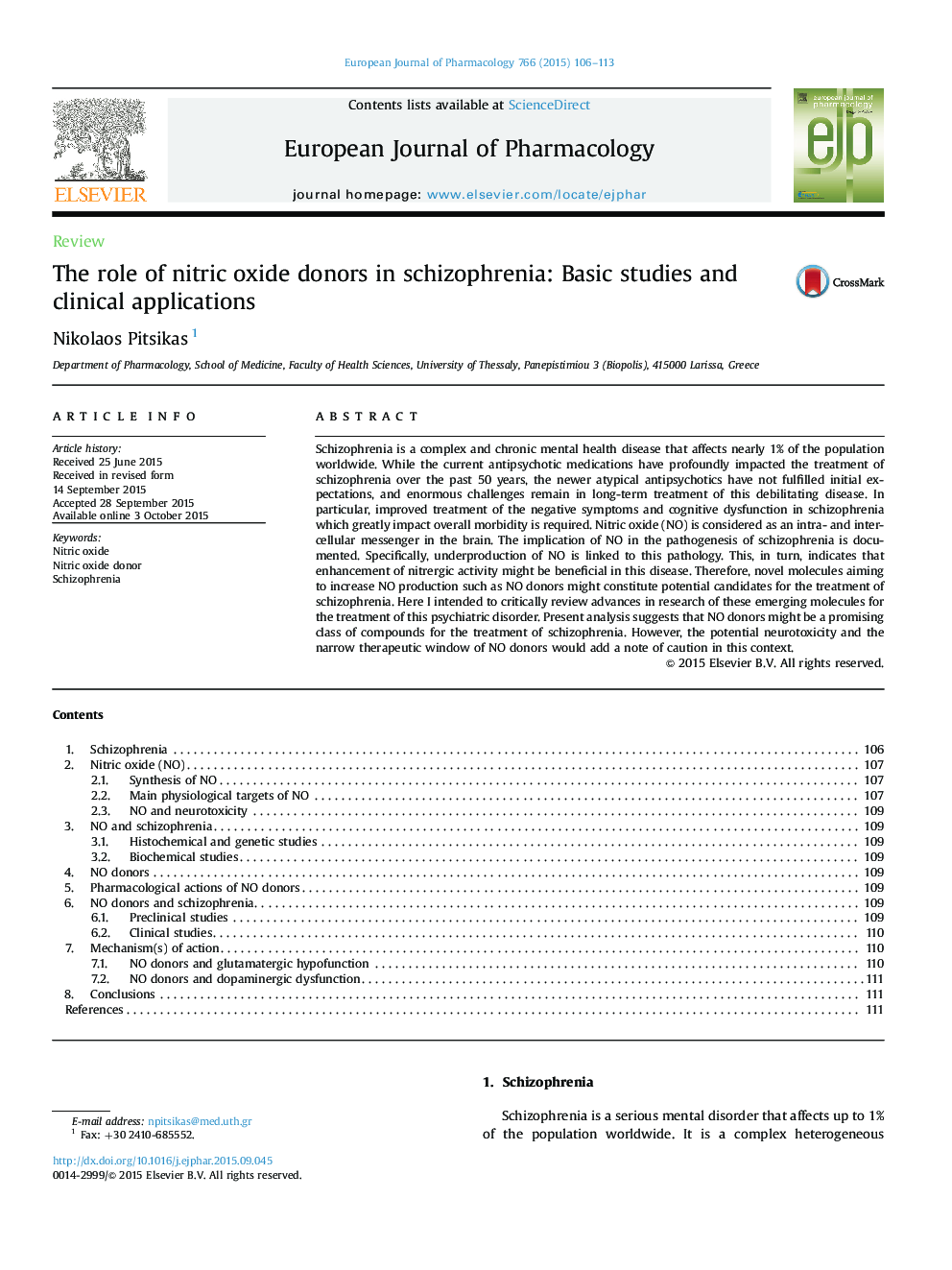| Article ID | Journal | Published Year | Pages | File Type |
|---|---|---|---|---|
| 2531209 | European Journal of Pharmacology | 2015 | 8 Pages |
Schizophrenia is a complex and chronic mental health disease that affects nearly 1% of the population worldwide. While the current antipsychotic medications have profoundly impacted the treatment of schizophrenia over the past 50 years, the newer atypical antipsychotics have not fulfilled initial expectations, and enormous challenges remain in long-term treatment of this debilitating disease. In particular, improved treatment of the negative symptoms and cognitive dysfunction in schizophrenia which greatly impact overall morbidity is required. Nitric oxide (NO) is considered as an intra- and inter-cellular messenger in the brain. The implication of NO in the pathogenesis of schizophrenia is documented. Specifically, underproduction of NO is linked to this pathology. This, in turn, indicates that enhancement of nitrergic activity might be beneficial in this disease. Therefore, novel molecules aiming to increase NO production such as NO donors might constitute potential candidates for the treatment of schizophrenia. Here I intended to critically review advances in research of these emerging molecules for the treatment of this psychiatric disorder. Present analysis suggests that NO donors might be a promising class of compounds for the treatment of schizophrenia. However, the potential neurotoxicity and the narrow therapeutic window of NO donors would add a note of caution in this context.
